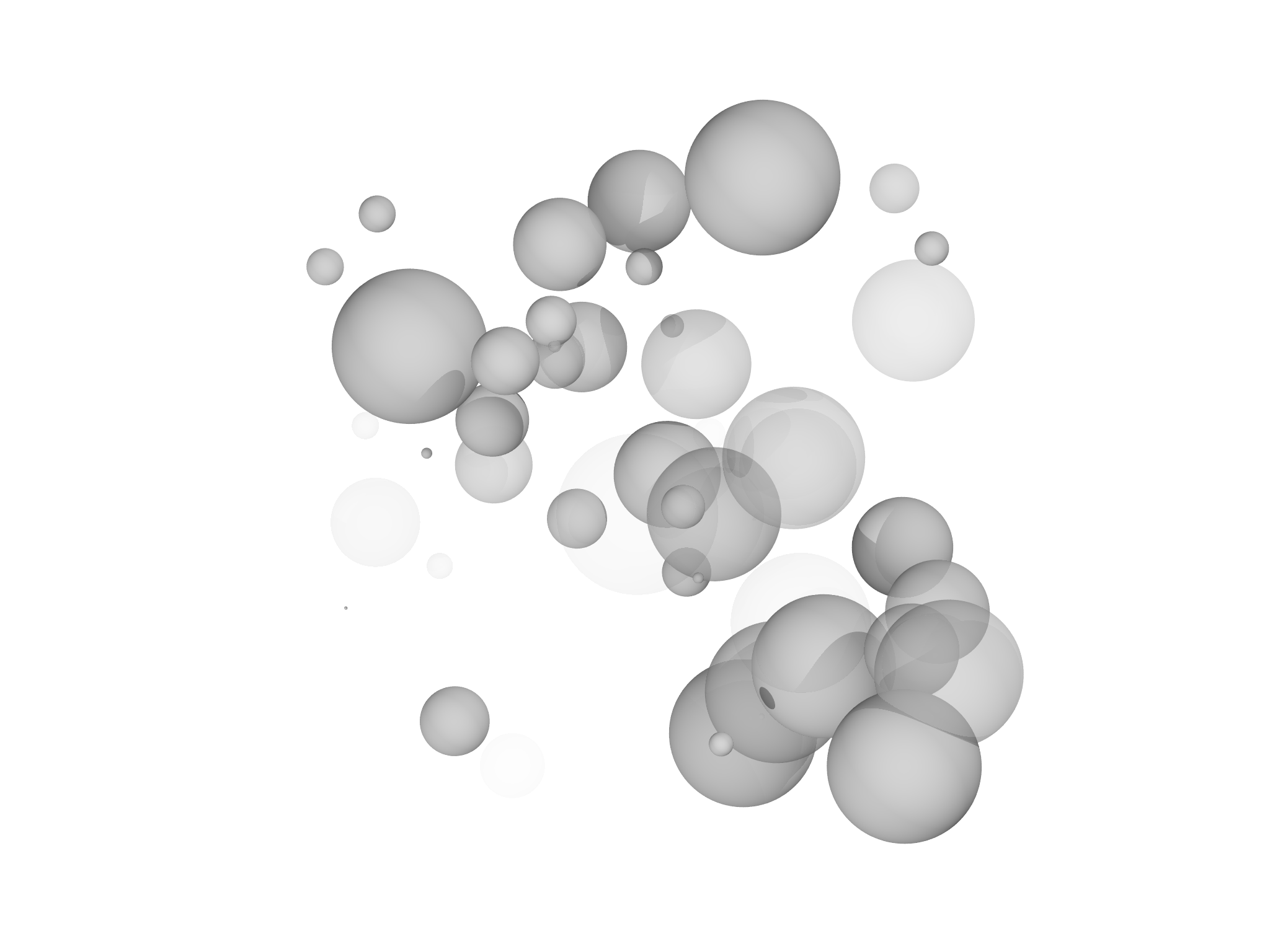The povray module
All figures in this manual have been exported directly from the morpho
programs that created them using the persistence of vision raytracer or
povray. A raytracer is a program that takes a scene description and
renders graphical output by tracing the path of individual rays of
light. Because the model of light propagation and image formation is
physically motivated, the output is of very high quality. By contrast,
morphoview and most graphics programs use simplified approximate
rendering techniques that enable real time interactive output. At the
time of writing, raytracing is gaining popularity as a technique, and
some high performance graphics cards now have real time raytracing
capability. povray is a very well established program that is widely
available and cross platform.
To use the povray module, you need to create a POVRaytracer object and
initialize it with the graphics object
import povray
var pov = POVRaytracer(g)
You can choose features of the graphics out by setting properties of this object, for example:
pov.viewpoint = Matrix([5,5,6]) // Sets where the camera is located
pov.viewangle = 18 // Controls the angular size of the view
pov.background = White // Sets the background for rendering
pov.light=[Matrix([10,10,10]), Matrix([0,0,10]), Matrix([-10,-10,10])] // Places light point sources at several positions
Because the list of properties can get quite cumbersome, it's possible to specify them through a separate Camera object and initialize the raytracer to use the Camera:
var pov = POVRaytracer(g, camera=cam)
See the Reference section for further details.
To produce output, call the render method to create a .pov file and run povray:
pov.render("graphic.pov")
By default, the resulting .png file is opened. You can stop this by
calling render with display set to false:
pov.render("graphic.pov", display=false)
If you wish to simply create .pov file without running povray, use the write method:
pov.write("graphic.pov")

A major advantage of raytracing is natural support for transparency
effects. Here we generate 50 spheres of random placement, size and
transparency by setting the transmit option. The rendered output is
shown in Fig. 6.7.
fn randompt(R) {
return R*Matrix([random()-1/2, random()-1/2, random()-1/2])
}
for (i in 1..50) {
g.display(Sphere(randompt(1.5), random()/5, transmit=random()))
}